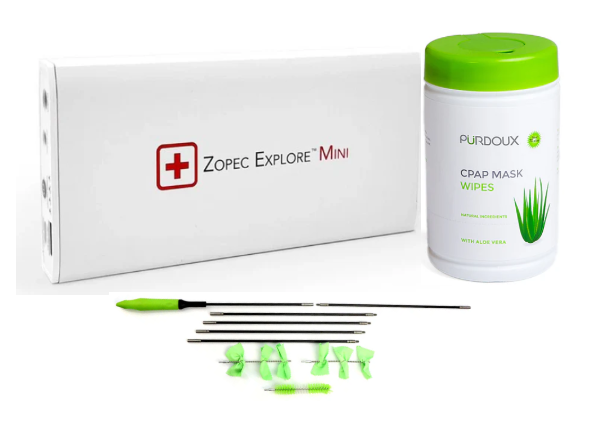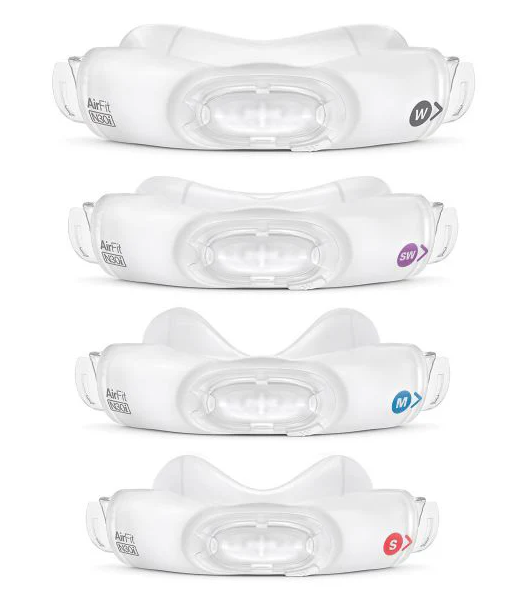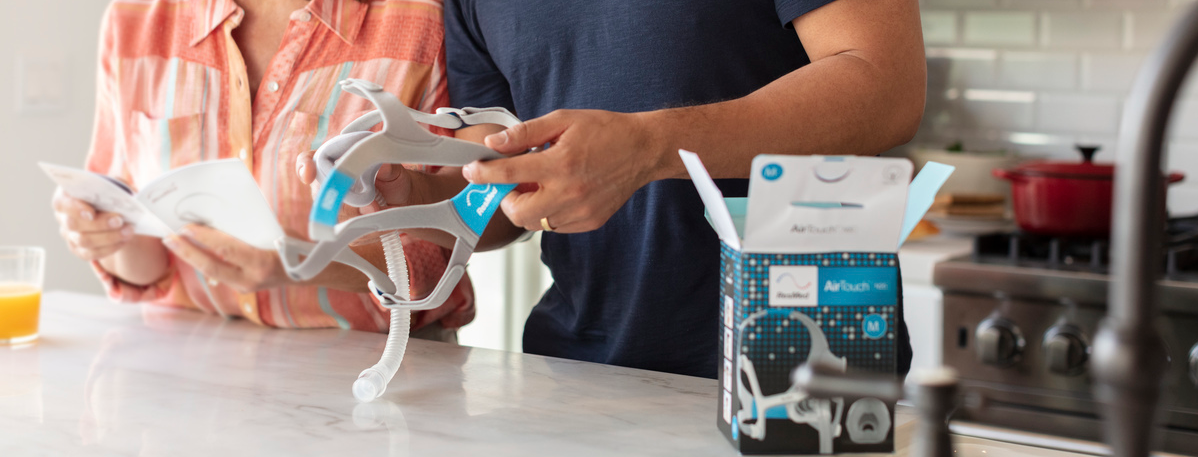Choosing the Right CPAP Mask: Full Face, Nasal, Nasal Pillow, and Total Face Options Explained
Finding the best CPAP mask can transform your sleep apnea therapy, making it more comfortable, effective, and easier to stick with long-term. Whether you're a first-time CPAP user or looking to upgrade your mask, understanding the differences between mask types can help you choose the right fit for your needs. In this guide, we'll break down the four main types of CPAP masks—full face masks, nasal masks, nasal pillow masks, and total face masks—and highlight special top-of-head connection options for added comfort and freedom of movement.
Quick Summary
- Full face masks: Best for mouth breathers, people with nasal congestion, and those using high pressure settings.
- Nasal masks: Best for nose breathers and side sleepers who want balance between comfort and seal.
- Nasal pillow masks: Best for minimal facial contact and active sleepers.
- Total face masks: Best for users with facial hair, dentures, or unique facial features that make other masks hard to fit.
- Top-of-head connection masks: Great for users who feel claustrophobic or want the hose kept out of sight and out of the way.
Full Face CPAP Masks
Full face masks cover both the nose and mouth, making them ideal for people who breathe through their mouths at night or have chronic nasal congestion. They are also well-suited for users who require higher CPAP pressure settings because the design helps distribute pressure more evenly.



Examples:
- Traditional: ResMed AirFit F20 — triangular shape, covers the nose bridge to under the mouth.
- Minimal-contact: ResMed AirFit F40 — cradles the nostrils without covering the nose bridge, offering a lighter feel.
- Top-of-head connection: ResMed AirFit F30i — similar to the F40 but connects the hose at the top of the head, keeping the tubing out of sight and ideal for people who feel claustrophobic or want greater freedom of movement.
Best for: Mouth breathers, users with nasal issues, and those needing higher pressure settings.
Nasal CPAP Masks
Nasal masks deliver airflow through the nose and are popular with people who breathe mostly through their nose during sleep. They provide a balance of comfort and stability, often making them one of the most versatile mask types.



Examples:
- Traditional: ResMed AirFit N20 — seals under the nostrils and rests on the nose bridge.
- Minimal-contact: ResMed AirFit N30 — cradles the nostrils with no pressure on the nose bridge.
- Top-of-head connection: ResMed AirFit N30i — similar to the N30 but with the hose connecting at the top, keeping the hose away from your face and making it feel more "out of sight, out of mind."
Best for: Nose breathers, side sleepers, and users seeking a lightweight alternative to full face masks.
Nasal Pillow CPAP Masks
Nasal pillow masks are the most compact CPAP mask style, using soft silicone pillows that fit just inside the nostrils. They deliver airflow directly and are favored by those wanting the least intrusive design.


Example:
- Minimalist: ResMed AirFit P10 — ultra-light, quiet, and minimal.
- Top-of-head connection: ResMed AirFit P30i — similar to the P10 but with the hose connecting at the top for added freedom and less clutter around the face.
Benefits: Minimal contact, reduced air leaks, and maximum freedom of movement.
Best for: Active sleepers, people who feel claustrophobic in larger masks, and anyone wanting a "barely there" CPAP experience.
Total Face CPAP Masks
Total face masks cover the entire face from forehead to chin, sealing around the perimeter instead of around the nose or mouth. They are especially useful for users who struggle to get a good fit with traditional masks due to facial hair, dentures, or unique facial shapes.
Example: Philips Respironics FitLife Total Face Mask.
Best for: People with facial hair, dentures, facial irregularities, or those who experience chronic leaks with other mask types.
CPAP Mask Comparison Chart
|
Feature |
||||
|
Covers |
Nose + mouth |
Nose only |
Just inside nostrils |
Entire face (forehead to chin) |
|
Best for |
Mouth breathers, nasal congestion, high pressures |
Nose breathers, side sleepers |
Minimal contact, active sleepers |
Facial hair, dentures, irregular facial features |
|
Pressure tolerance |
Low to high |
Low to medium-high |
Low to medium |
Low to medium |
|
Weight/bulk |
Heavier, larger footprint |
Moderate, balanced |
Lightest, most minimal |
Bulkiest, covers full face |
|
Freedom of movement |
Moderate, front hose (unless using top-of-head models) |
Good, especially with top-of-head models |
Excellent, especially with top-of-head models |
Limited, due to full face coverage |
|
Example models |
ResMed AirFit F20, F30i, F40 |
ResMed AirFit N20, N30i |
ResMed AirFit P10, P30i |
Philips FitLife Total Face |
Why Top-of-Head Connection Masks Are Popular
Unlike most CPAP masks where the hose connects at the front, top-of-head connection masks route the hose up and over the head. This design keeps the tubing out of the way, reducing feelings of claustrophobia and letting you move more freely at night. They're especially appreciated by active sleepers and people who want a less obtrusive setup.
Top picks: ResMed AirFit F30i (full face), AirFit N30i (nasal), and AirFit P30i (nasal pillow).
Frequently Asked Questions
Q: What's the most comfortable CPAP mask?
A: It depends on your sleeping style and breathing habits. Nose breathers often prefer nasal or nasal pillow masks, while mouth breathers typically need a full face mask. Active sleepers often benefit from top-of-head connection models for maximum freedom.
Q: How do I know which mask is best for me?
A: Choosing the right mask depends on several factors: your breathing style (whether you breathe through your nose or mouth), comfort preferences, pressure settings, and whether you experience feelings of claustrophobia. As CPAP Outlet, we’re here to help — feel free to contact us, and we’ll do our best to recommend suitable options based on your needs. Additionally, if you’re undergoing a sleep study, we encourage you to take advantage of the opportunity to try out different mask styles and gather feedback from your doctor or sleep technician, as their input can be very helpful in finding the best fit for your therapy.
Q: Are all CPAP masks compatible with all machines?
A: YES, with a caveat! CPAP tubing uses a universal 22mm diameter connection, making masks compatible with nearly all CPAP machines. A current exception being the ResMed AirMini, which is compatible with only some masks and may require an adapter.
Final Thoughts and Next Steps
Choosing the right CPAP mask can make a big difference in how well you stick to your sleep apnea therapy. Explore our CPAP mask collection to see all available options, or contact us for expert help finding your perfect fit.
Your comfort matters — let us help you sleep better tonight.




